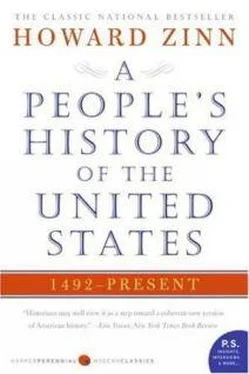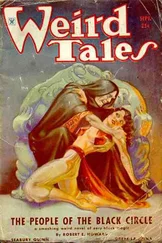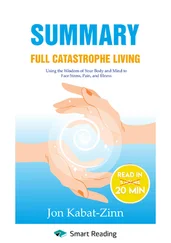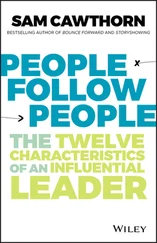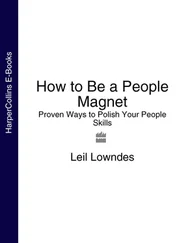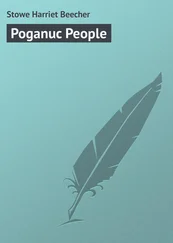Howard Zinn - A People
Здесь есть возможность читать онлайн «Howard Zinn - A People» весь текст электронной книги совершенно бесплатно (целиком полную версию без сокращений). В некоторых случаях можно слушать аудио, скачать через торрент в формате fb2 и присутствует краткое содержание. Издательство: Harper-Collins, Жанр: Фэнтези, на английском языке. Описание произведения, (предисловие) а так же отзывы посетителей доступны на портале библиотеки ЛибКат.
- Название:A People
- Автор:
- Издательство:Harper-Collins
- Жанр:
- Год:неизвестен
- ISBN:нет данных
- Рейтинг книги:4 / 5. Голосов: 1
-
Избранное:Добавить в избранное
- Отзывы:
-
Ваша оценка:
- 80
- 1
- 2
- 3
- 4
- 5
A People: краткое содержание, описание и аннотация
Предлагаем к чтению аннотацию, описание, краткое содержание или предисловие (зависит от того, что написал сам автор книги «A People»). Если вы не нашли необходимую информацию о книге — напишите в комментариях, мы постараемся отыскать её.
A People — читать онлайн бесплатно полную книгу (весь текст) целиком
Ниже представлен текст книги, разбитый по страницам. Система сохранения места последней прочитанной страницы, позволяет с удобством читать онлайн бесплатно книгу «A People», без необходимости каждый раз заново искать на чём Вы остановились. Поставьте закладку, и сможете в любой момент перейти на страницу, на которой закончили чтение.
Интервал:
Закладка:
Was all this bloodshed and deceit-from Columbus to Cortes, Pizarro, the Puritans-a necessity for the human race to progress from savagery to civilization? Was Morison right in burying the story of genocide inside a more important story of human progress? Perhaps a persuasive argument can be made-as it was made by Stalin when he killed peasants for industrial progress in the Soviet Union, as it was made by Churchill explaining the bombings of Dresden and Hamburg, and Truman explaining Hiroshima. But how can the judgment be made if the benefits and losses cannot be balanced because the losses are either unmentioned or mentioned quickly?
That quick disposal might be acceptable ("Unfortunate, yes, but it had to be done") to the middle and upper classes of the conquering and «advanced» countries. But is it acceptable to the poor of Asia, Africa, Latin America, or to the prisoners in Soviet labor camps, or the blacks in urban ghettos, or the Indians on reservations-to the victims of that progress which benefits a privileged minority in the world? Was it acceptable (or just inescapable?) to the miners and railroaders of America, the factory hands, the men and women who died by the hundreds of thousands from accidents or sickness, where they worked or where they lived-casualties of progress? And even the privileged minority-must it not reconsider, with that practicality which even privilege cannot abolish, the value of its privileges, when they become threatened by the anger of the sacrificed, whether in organized rebellion, unorganized riot, or simply those brutal individual acts of desperation labeled crimes by law and the state?
If there are necessary sacrifices to be made for human progress, is it not essential to hold to the principle that those to be sacrificed must make the decision themselves? We can all decide to give up something of ours, but do we have the right to throw into the pyre the children of others, or even our own children, for a progress which is not nearly as clear or present as sickness or health, life or death?
What did people in Spain get out of all that death and brutality visited on the Indians of the Americas? For a brief period in history, there was the glory of a Spanish Empire in the Western Hemisphere. As Hans Koning sums it up in his book Columbus: His Enterprise :
For all the gold and silver stolen and shipped to Spain did not make the Spanish people richer. It gave their kings an edge in the balance of power for a time, a chance to hire more mercenary soldiers for their wars. They ended up losing those wars anyway, and all that was left was a deadly inflation, a starving population, the rich richer, the poor poorer, and a ruined peasant class .
Beyond all that, how certain are we that what was destroyed was inferior? Who were these people who came out on the beach and swam to bring presents to Columbus and his crew, who watched Cortes and Pizarro ride through their countryside, who peered out of the forests at the first white settlers of Virginia and Massachusetts?
Columbus called them Indians, because he miscalculated the size of the earth. In this book we too call them Indians, with some reluctance, because it happens too often that people are saddled with names given them by their conquerors.
And yet, there is some reason to call them Indians, because they did come, perhaps 25,000 years ago, from Asia, across the land bridge of the Bering Straits (later to disappear under water) to Alaska. Then they moved southward, seeking warmth and land, in a trek lasting thousands of years that took them into North America, then Central and South America. In Nicaragua, Brazil, and Ecuador their petrified footprints can still be seen, along with the print of bison, who disappeared about five thousand years ago, so they must have reached South America at least that far back.
Widely dispersed over the great land mass of the Americas, they numbered approximately 75 million people by the rime Columbus came, perhaps 25 million in North America. Responding to the different environments of soil and climate, they developed hundreds of different tribal cultures, perhaps two thousand different languages. They perfected the art of agriculture, and figured out how to grow maize (corn), which cannot grow by itself and must be planted, cultivated, fertilized, harvested, husked, shelled. They ingeniously developed a variety of other vegetables and fruits, as well as peanuts and chocolate and tobacco and rubber.
On their own, the Indians were engaged in the great agricultural revolution that other peoples in Asia, Europe, Africa were going through about the same time.
While many of the tribes remained nomadic hunters and food gatherers in wandering, egalitarian communes, others began to live in more settled communities where there was more food, larger populations, more divisions of labor among men and women, more surplus to feed chiefs and priests, more leisure time for artistic and social work, for building houses. About a thousand years before Christ, while comparable constructions were going on in Egypt and Mesopotamia, the Zuni and Hopi Indians of what is now New Mexico had begun to build villages consisting of large terraced buildings, nestled in among cliffs and mountains for protection from enemies, with hundreds of rooms in each village. Before the arrival of the European explorers, they were using irrigation canals, dams, were doing ceramics, weaving baskets, making cloth out of cotton.
By the time of Christ and Julius Caesar, there had developed in the Ohio River Valley a culture of so-called Moundbuilders, Indians who constructed thousands of enormous sculptures out of earth, sometimes in the shapes of huge humans, birds, or serpents, sometimes as burial sites, sometimes as fortifications. One of them was 3 1/2 miles long, enclosing 100 acres. These Moundbuilders seem to have been part of a complex trading system of ornaments and weapons from as far off as the Great Lakes, the Far West, and the Gulf of Mexico.
About A.D. 500, as this Moundbuilder culture of the Ohio Valley was beginning to decline, another culture was developing westward, in the valley of the Mississippi, centered on what is now St. Louis. It had an advanced agriculture, included thousands of villages, and also built huge earthen mounds as burial and ceremonial places near a vast Indian metropolis that may have had thirty thousand people. The largest mound was 100 feet high, with a rectangular base larger than that of the Great Pyramid of Egypt. In the city, known as Cahokia, were toolmakers, hide dressers, potters, jewelry makers, weavers, salt makers, copper engravers, and magnificent ceramists. One funeral blanket was made of twelve thousand shell beads.
From the Adirondacks to the Great Lakes, in what is now Pennsylvania and upper New York, lived the most powerful of the northeastern tribes, the League of the Iroquois, which included the Mohawks (People of the Flint), Oneidas (People of the Stone), Onondagas (People of the Mountain), Cayugas (People at the Landing), and Senecas (Great Hill People), thousands of people bound together by a common Iroquois language.
In the vision of the Mohawk chief Iliawatha, the legendary Dekaniwidah spoke to the Iroquois: "We bind ourselves together by taking hold of each other's hands so firmly and forming a circle so strong that if a tree should fall upon it, it could not shake nor break it, so that our people and grandchildren shall remain in the circle in security, peace and happiness."
In the villages of the Iroquois, land was owned in common and worked in common. Hunting was done together, and the catch was divided among the members of the village. Houses were considered common property and were shared by several families. The concept of private ownership of land and homes was foreign to the Iroquois. A French Jesuit priest who encountered them in the 1650s wrote: "No poorhouses are needed among them, because they are neither mendicants nor paupers… Their kindness, humanity and courtesy not only makes them liberal with what they have, but causes them to possess hardly anything except in common."
Читать дальшеИнтервал:
Закладка:
Похожие книги на «A People»
Представляем Вашему вниманию похожие книги на «A People» списком для выбора. Мы отобрали схожую по названию и смыслу литературу в надежде предоставить читателям больше вариантов отыскать новые, интересные, ещё непрочитанные произведения.
Обсуждение, отзывы о книге «A People» и просто собственные мнения читателей. Оставьте ваши комментарии, напишите, что Вы думаете о произведении, его смысле или главных героях. Укажите что конкретно понравилось, а что нет, и почему Вы так считаете.
